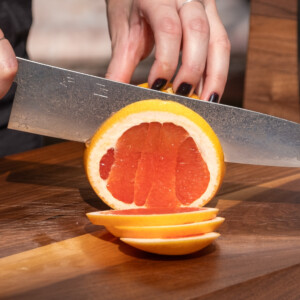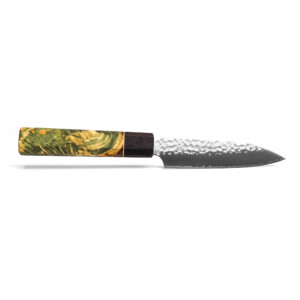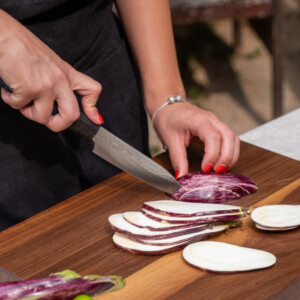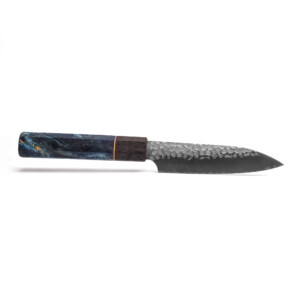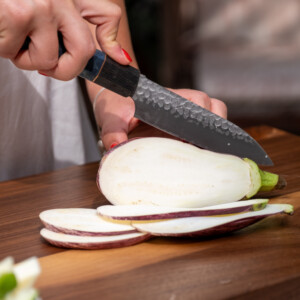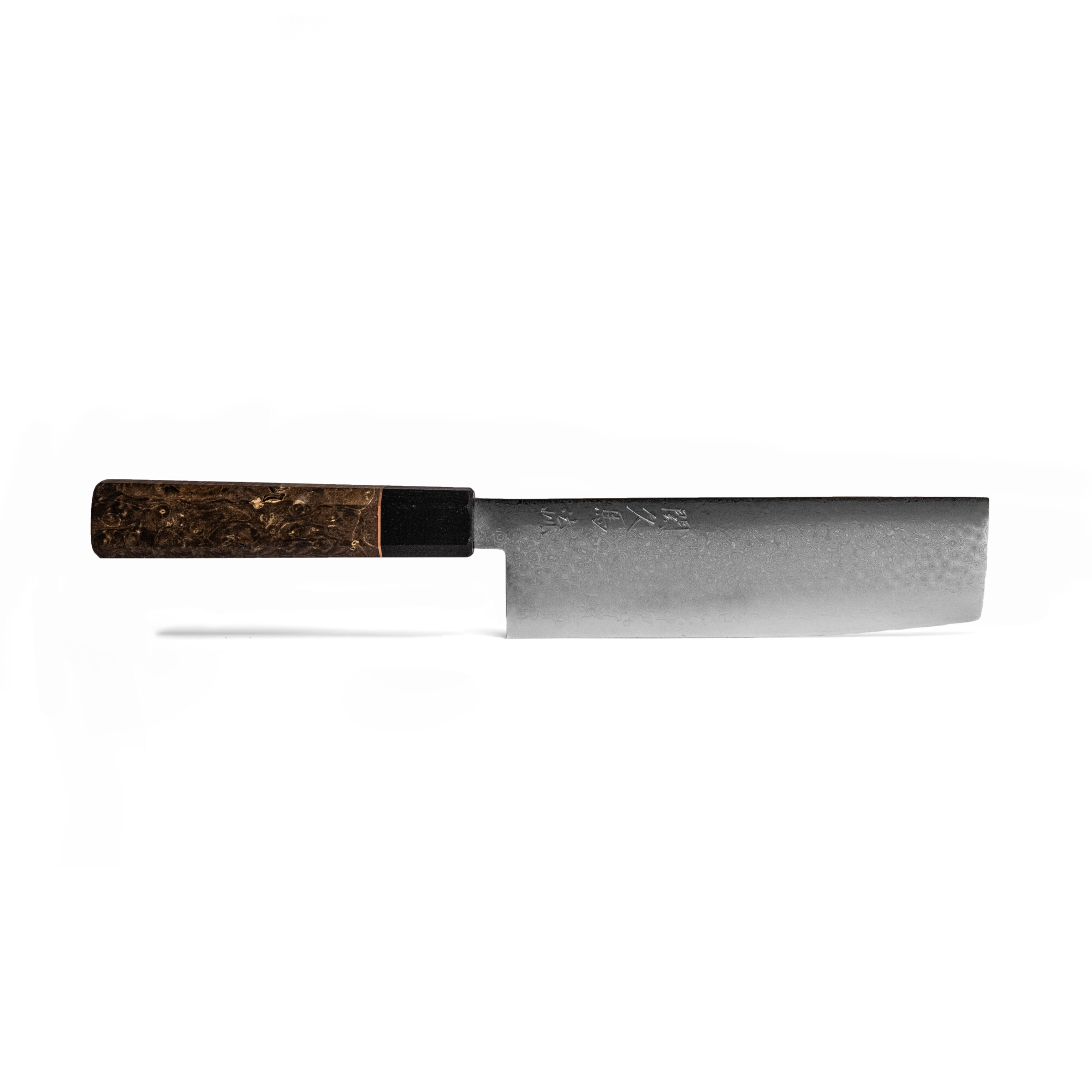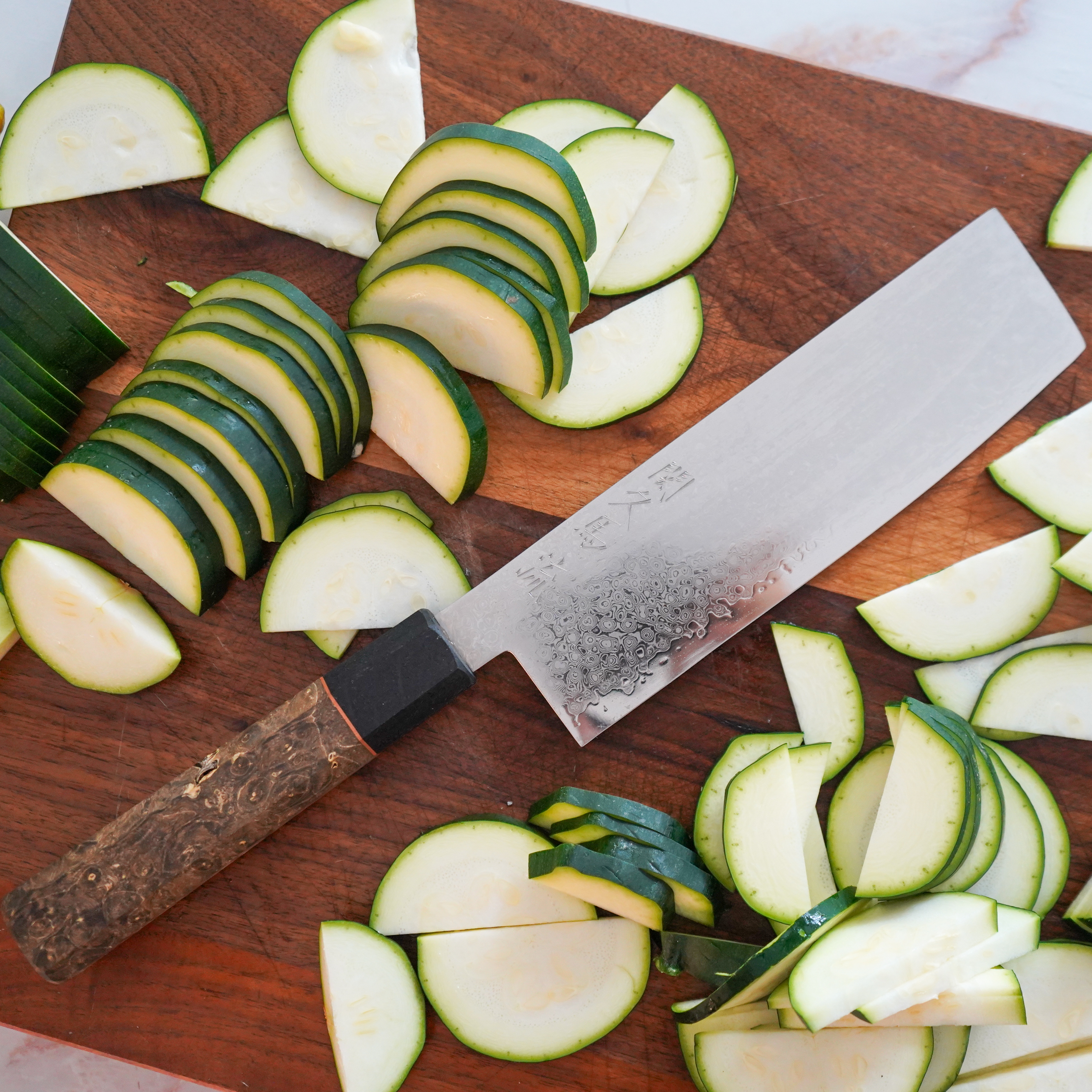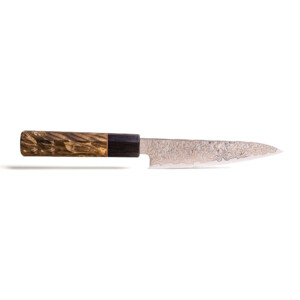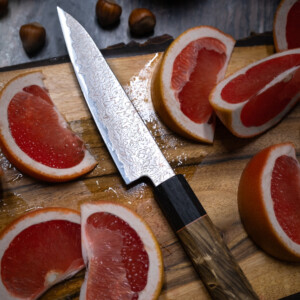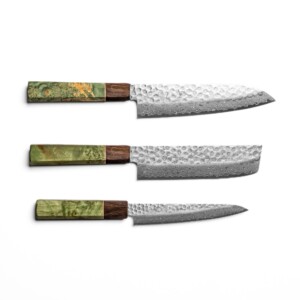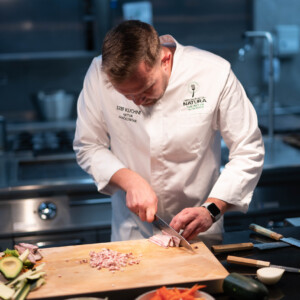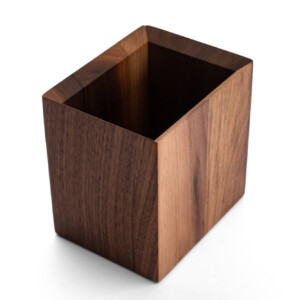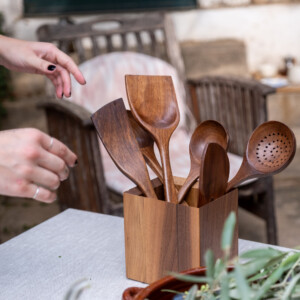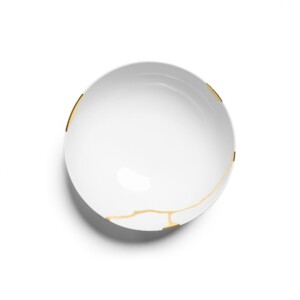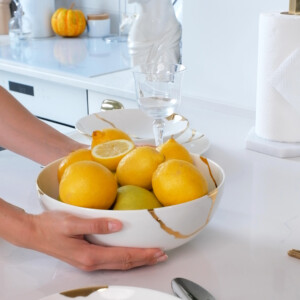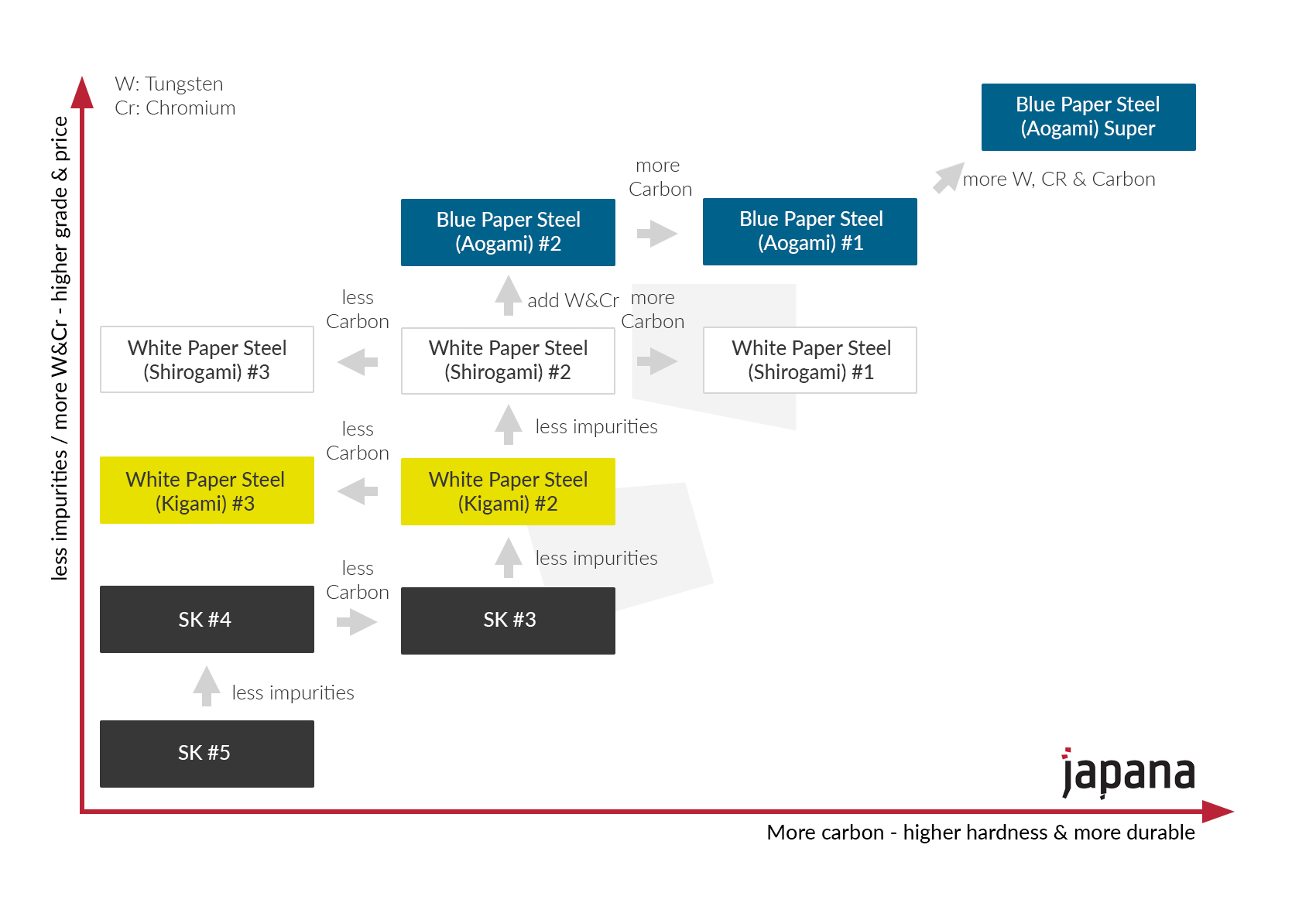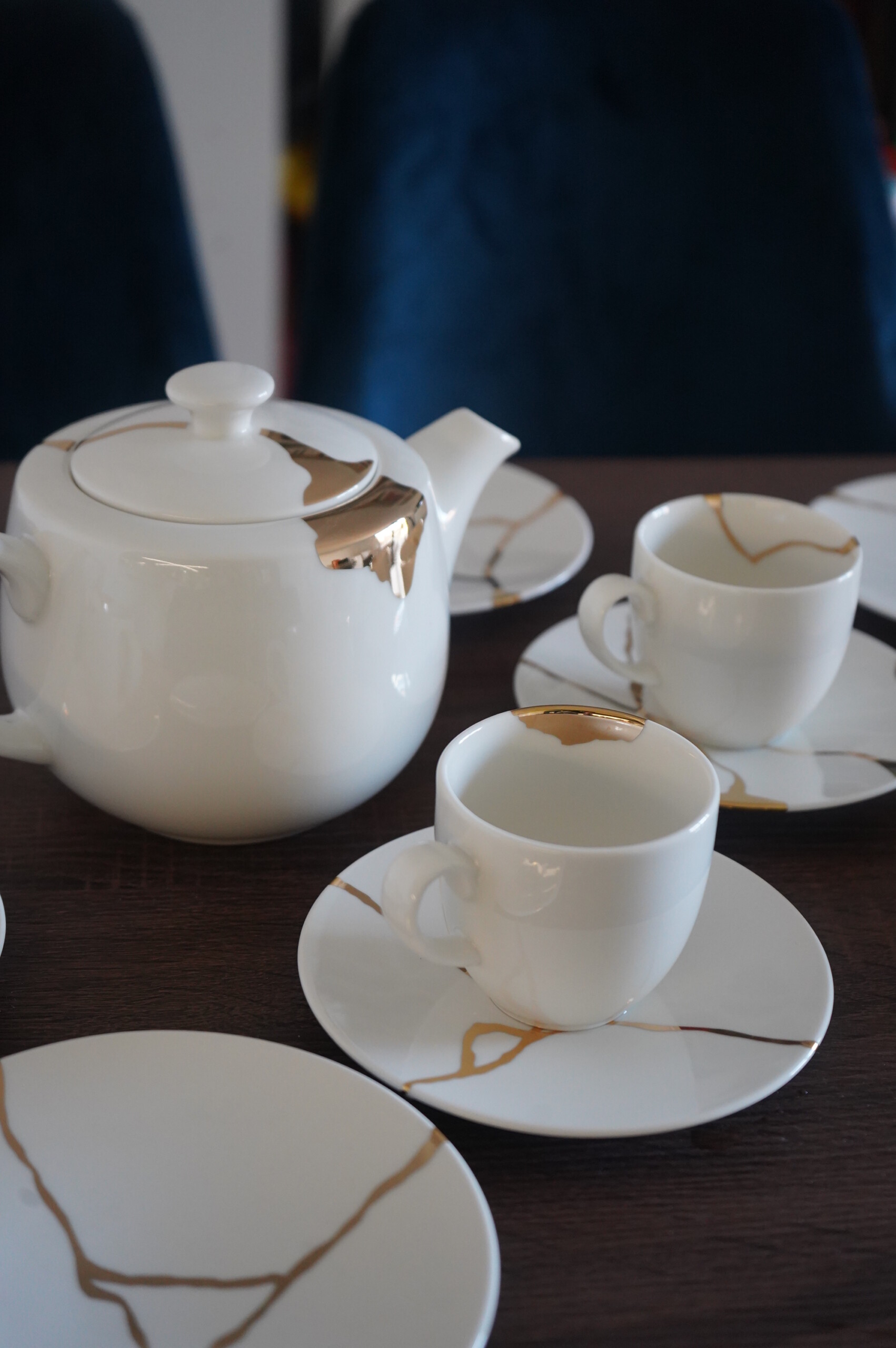In the realm of culinary tools, Japanese knives have gained immense recognition and admiration for their exceptional craftsmanship, precision, and cutting performance. However, for home cooks who are not so familiar with the intricacies of Japanese knife-making or the names associated with these knives, the question arises: Are Japanese knives worth their price? In this detailed article, we will delve into the world of Japanese knives, exploring their unique features, the craftsmanship behind their creation, and ultimately helping you determine whether investing in a Japanese knife is a worthwhile endeavor for your culinary pursuits.
While aesthetic definitely plays a part, it’s not only what can make Japanese knives so expensive. The high cost is a result of many factors: the high-end materials cost, extra labour of forge welding together multiple layers, the fact most of the high-priced knives are forged on a small scale and they make them by hand (artisan workshop usually have 2–4 students + blade Master orchestrating them).
Often then, what you are getting is a highly functional, unique art object.
There are knives costing more than 1000 GBP, however, it takes around 2–5 weeks to make one (and many, many labour hours in extreme conditions).
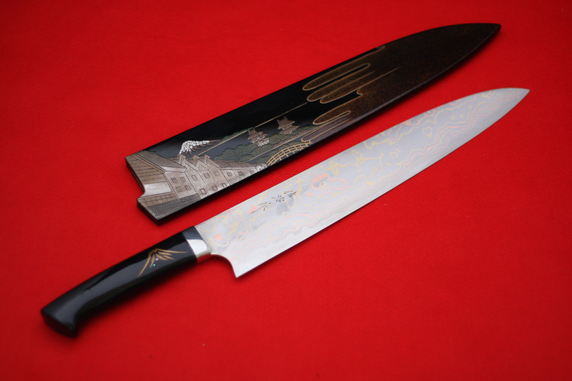
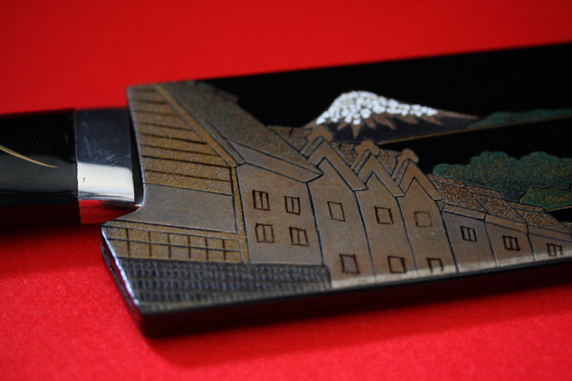
Takeshi Saji Coloured Damascus Gyuto Maki-e Art representing Two Japanese Castles (300mm)
Some Japanese knife makers are true artists and yes, when you buy one of their knives you are buying a piece of art, and something collectible as much as you are buying a tool. Japanese knives are thinner and lighter than German or other Western-type blades – and again, it takes a labour time and true craftsmanship to balance the blade and the handle (The Difference Between Western vs. Japanese Style Knives). The best knives are obviously hand-forged (these are the most expensive) and made from extra-hard steel strengthened with metals like molybdenum and nickel (check detailed steel composition chart for more info) so that they can hold their edge longer. Those edges are often twice or three times as fine as those on European knives.
Understanding the Essence of Japanese Knife-Making
To fully comprehend the value and worth of Japanese knives, it is essential to grasp the essence of Japanese knife-making. Rooted in centuries-old traditions and craftsmanship, Japanese knives are the result of meticulous attention to detail, dedication to perfection, and a deep respect for the art of cutting.
Superior Steel: The Foundation of Japanese Knives
One of the key factors that contribute to the high price of Japanese knives is the exceptional quality of the steel used in their construction. Japanese knife-makers often employ high-carbon stainless steel, which offers a perfect balance of hardness, edge retention, and corrosion resistance. This superior steel allows for a sharper edge and provides the necessary durability for prolonged use.
The Art of Forging: Creating a Blade of Unmatched Precision
The process of forging a Japanese knife involves a combination of traditional techniques, skilled craftsmanship, and modern innovations. The blade is meticulously shaped and crafted, layer by layer, to achieve a perfect balance of hardness and flexibility. Each step in the forging process, from shaping the blade to heat treatment, contributes to the knife’s overall quality and performance.
The Mastery of the Blade Edge: Unparalleled Sharpness
One of the defining features of Japanese knives is their incredible sharpness. The intricate process of honing the blade edge to a razor-sharp angle is a testament to the skill and expertise of Japanese knife-makers. The acute edge angle allows for precise and effortless cutting, ensuring clean, smooth slices with minimal effort.
The Uniqueness of Japanese Knife Profiles: A Blade for Every Purpose

Japanese knives encompass a diverse range of profiles, each specifically designed to excel in different culinary tasks. Understanding the various knife types and their intended uses is crucial when considering the value of a Japanese knife.
- Gyuto: The Japanese equivalent of a Western chef’s knife, the Gyuto is a versatile, all-purpose knife suitable for a wide range of kitchen tasks. Its curved blade and pointed tip allow for slicing, dicing, and chopping with precision.
- Santoku: Translated as “three virtues,” the Santoku knife is renowned for its ability to handle slicing, dicing, and mincing tasks. With a shorter, wider blade, it offers excellent control and versatility.
- Nakiri: This vegetable knife features a straight blade with a squared-off tip, making it ideal for precise vegetable preparation, such as slicing, dicing, and chopping.
- Yanagiba: A traditional Japanese knife used for slicing raw fish and creating sashimi, the Yanagiba knife boasts a long, single-edged blade that allows for precise, clean cuts.
- Deba: The Deba knife is primarily used for filleting and preparing fish. With its sturdy, thick blade and robust construction, it excels in heavy-duty tasks.
- Usuba: The Usuba knife is a traditional vegetable knife with a thin, single-edged blade. It is specifically designed for precision vegetable cuts and intricate garnishes.
- Honesuki: The Honesuki is a boning knife primarily used for poultry, featuring a sturdy, triangular-shaped blade that allows for precision and control when separating meat from bones.
The Value of Japanese Knife-Making: Beyond Price
While the price tag of Japanese knives may initially seem daunting, it is essential to consider the value they bring to your culinary journey. Investing in a Japanese knife offers numerous benefits that justify their price:
- Unparalleled Cutting Performance: The exceptional sharpness and precision of Japanese knives elevate your cutting experience, allowing for effortless and precise cuts.
- Enhanced Efficiency: Japanese knives are designed to minimize resistance and maximize cutting efficiency, making your kitchen tasks more enjoyable and efficient.
- Longevity and Durability: Japanese knives, when properly cared for, have the potential to last a lifetime. Their high-quality construction and materials ensure durability and prolonged performance.
- Artistry and Aesthetics: Japanese knives are not merely tools but also works of art. The meticulous craftsmanship and exquisite design add beauty and elegance to your culinary arsenal.
- Cultural Heritage: Embracing Japanese knives allows you to immerse yourself in the rich cultural heritage and traditions associated with Japanese knife-making. It’s an opportunity to appreciate the centuries-old craftsmanship that has been passed down through generations.
Making an Informed Decision: Choosing the Right Japanese Knife
While Japanese knives undoubtedly offer exceptional value, it is crucial to select the right knife that aligns with your needs, preferences, and budget. Consider the following factors when making your decision:
- Purpose: Identify the specific tasks you intend to use the knife for. This will help determine the most suitable knife profile for your needs.
- Quality and Reputation: Research reputable brands and knife-makers known for their commitment to quality and craftsmanship. Look for knives made by skilled artisans using high-quality materials.
- Budget: Set a realistic budget and explore options within that range. While high-end Japanese knives can be costly, there are also mid-range options that offer excellent quality at a more affordable price point.
- Comfort and Ergonomics: Consider the handle design, weight, and balance of the knife. Choose a knife that feels comfortable and well-balanced in your hand to ensure a pleasurable cutting experience.
- Maintenance: Japanese knives require proper care and maintenance to retain their performance. Consider the level of maintenance you are willing to undertake, including sharpening, honing, and proper storage.
Value is what it means to you
Japanese knives are undoubtedly worth their price when considering the craftsmanship, cutting performance, longevity, and cultural significance they offer. The intricate art of Japanese knife-making, honed through centuries of tradition, results in knives that are not only tools but also embodiments of excellence and precision. Whether you choose to invest in a specialized Japanese knife like a Sashimi or Yanagiba, or opt for a versatile chef’s knife like the Sakai Kyuba, the value derived from the superior cutting performance, durability, and aesthetic beauty of Japanese knives is unmatched.
So, if you are a home cook who seeks to elevate your culinary skills, appreciate the art of cutting, and embrace the essence of Japanese culinary heritage, investing in a Japanese knife is a decision that will enhance your cooking experience and bring lasting value to your kitchen. Allow the grace and precision of a Japanese knife to become an extension of your culinary passion and unlock a world of culinary possibilities.











